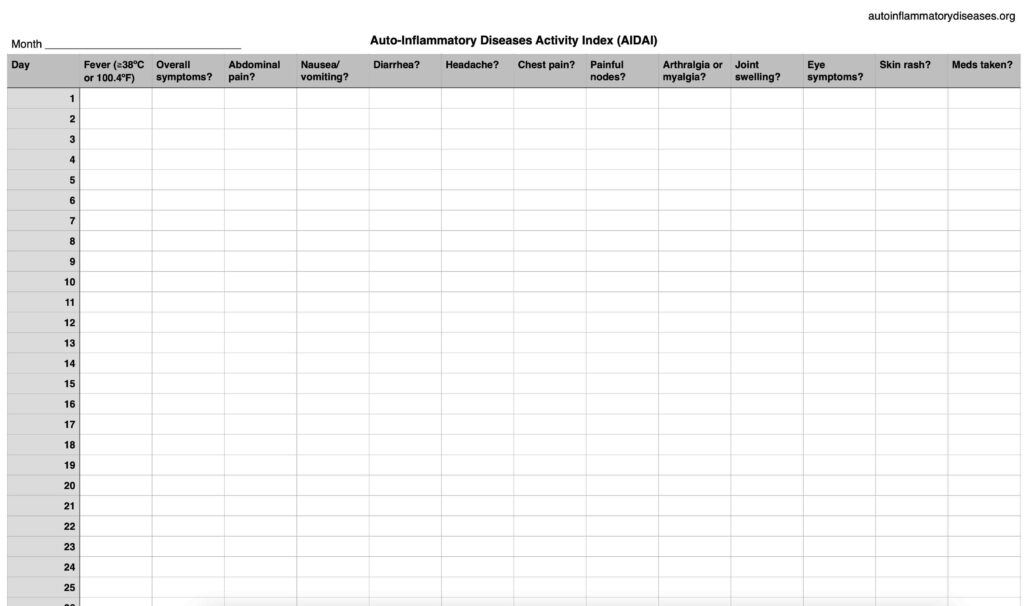Autoinflammatory diseases are diverse: they are caused by different genes, present at various stages in life, and cause various symptoms. Even in patients with the same disease, such as familial Mediterranean fever (FMF), attacks may differ widely; some can have severe abdominal pain while others develop headaches. As a result, measuring disease activity–how active the disease is and how severely the patient is affected–has been quite difficult.
Fortunately, researchers recently published a useful checklist for measuring disease activity in patients with four different autoinflammatory diseases: familial Mediterranean fever (FMF), mevalonate kinase deficiency (MVK), cryopyrin-associated periodic syndrome (CAPS), and TNF-receptor associated periodic syndrome (TRAPS). The checklist is called the Auto-Inflammatory Diseases Activity Index (AIDAI); it reviews 12 symptoms that are valuable in distinguishing patients that are having a lot of disease activity (and therefore may need additional therapy) from patients who are having few symptoms (and are doing well).
Aside from its use in clinical research, I think this checklist can be useful for doctors and their patients to help with disease management. Sometimes it’s difficult to say whether a medication is effective. However, if a patient checks off that they had 5 days with 3 different symptoms in January, but 6 days with 4 different symptoms after starting a new medication in February, it is clear the medication is not working.
Finally, this checklist can help doctors diagnose patients with recurrent fevers or symptoms of unknown causes. Keeping a journal and noting the 12 symptoms included in this checklist can help to determine whether the patient has an autoinflammatory disease, and if so, which one.
Although it wasn’t tested specifically in other autoinflammatory diseases (such as PFAPA), this checklist can also be helpful in other conditions.
Interested in using this checklist to keep track of symptoms?
I created a PDF file that you can download and print or an Excel file that you can use to log symptoms into a computer/tablet/phone.
Using the checklist is simple: each sheet represents one month, and each row indicates the day of the month. It is only necessary to complete the checklist when the patient has symptoms. Only symptoms related to autoinflammatory diseases should be recorded (e.g., fevers due to ear infections should not be noted in this chart).







